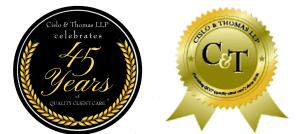Prepared by Cislo & Thomas LLP Attorney Mark D. Nielsen, Ph.D.
1. The Federal Circuit recently held (actually, reaffirmed previous precedent) that Section 102 (anticipation) and Section 103 (obviousness) do not impact the abstract idea analysis under Section 101 for subject matter eligibility. The opinion is here. Thus, even if your invention may be novel and non-obvious, that does not affect the Section 101 analysis. Certainly, evidence supporting novelty and non-obviousness may also support subject matter eligibility, but the mere fact that it does is not a silver bullet for an eligibility finding.
2. In a recent patent case out of the Southern District of California, an patent expert used in connection with an assertion of inequitable conduct in the procurement of a patent was precluded from testifying on what he thought a USPTO examiner may have done had the allegedly withheld prior art references been before the examiner. The opinion is here.
3. In a recent design patent decision from the Federal Circuit, the Court vacated-in-part a determination of the Patent Trial and Appeal Board (PTAB) that a combination of references would not have rendered a design for a gravity feed dispenser display obvious. The opinion is here. The PTAB improperly determined that one of the identified prior art references could not serve as a “primary” reference for obviousness with respect to a design patent (it was correct as to the other prior art reference not being capable of serving as a primary reference). Design patent obviousness requires a primary reference that has design features that are basically the same as the design features depicted in the design patent. The Federal Circuit vacated and remanded the case to the PTAB for further proceedings on obviousness in light of the absence of substantial evidence that one of the prior art references could not serve as a primary reference. This may open the door to more design patent challenges based on obviousness in the PTAB, but does not appear to be a significant change in the law.



